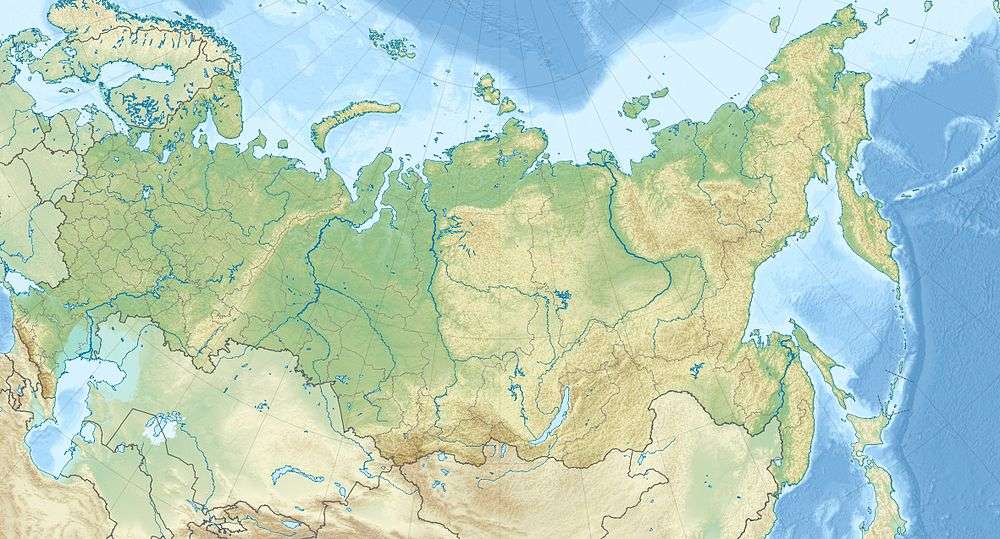Khopyor Nature Reserve
| Khopyor Nature Reserve | |
|---|---|
|
Russian: Хопёрский заповедник (Also: Khopersky) | |
|
IUCN category Ia (strict nature reserve) | |
|
Khopyor Zapovednik | |
 Location of Reserve | |
| Location | Voronezh Oblast |
| Nearest city | Voronezh |
| Coordinates | 51°11′41″N 41°43′58″E / 51.19472°N 41.73278°ECoordinates: 51°11′41″N 41°43′58″E / 51.19472°N 41.73278°E |
| Area | 16,178 hectares (39,980 acres) |
| Established | 1935 |
| Governing body | Ministry of Natural Resources and Environment (Russia) |
| Website | http://www.hoperzap.ru/index.php |
Khopyor Nature Reserve (Russian: Хопёрский заповедник) (also Khopersky) is a Russian 'zapovednik' (strict nature reserve) that protects a stretch of 50 km along the Khopyor River in the Veronezh Region. About 80% of the area is covered by forests, dominated floodplain and upland oak woods, small areas of steppes and meadows. There are about 400 lakes and oxbows. The reserve is situated in the Novokhopyorsky District of Voronezh Oblast.[1][2]
Topography
The Khopyor Reserve has a terrain that is forested floodplains and upland oak woods, along both banks of the Khopyer. The Khopyer river is the largest tributary of the Don River (Russia). During high water, a significant portion of the area in the reserve boundaries may be inundated. About 80% of the area is covered with forests, with steppes and meadows. The Khopyor River and tributary streams meander through the floodplains to leave 400 lakes and oxbows. The floodplains also create grassy bogs and black alder forests. The area in on an post-glacial plain of Quaternary sediments. The width of the reserve ranges from 1.5 km to 9 km.[2]
Climate and Ecoregion
Khopyor is located in the East European forest steppe ecoregion, a transition zone between the broadleaf forests of the north and the grasslands to the south. This ecoregion is characterized by a mosaic of forests, steppe, and riverine wetlands. [3]
The climate of Khopyor is Humid continental climate, cool summer (Köppen climate classification (Dwb) ). This climate is characterized by high variation in temperature, both daily and seasonally; with dry winters and cool summers. The coldest month, January, has an average temperature of -6 C degrees; that of July averages 26 C degrees. On average, the precipitation in the reserves averages 553 mm, spread approximately evenly through the year. Annual frost-free period averages 199 days. The winds are predominantly north-westerly.[4]
Flora and fauna
The plant life of the reserve is represengs a meeting of steppe feather grass and forb steppe/broadleaf grasses. Typical trees are oak coppices, with mixtures of ash, linden, maple and other tree species. Understory contains blackberry, buckthorn, wild rose, and viburnum. Scientists on the reserve have recorded over 1,060 species of vascular plants.[5]

A major focus of the reserve is the preservation of the vulnerable Russian muskrat. Along with the muskrat, the reserve has abundant small mammals - shrews, mice, voles, squirrels, and hares - along with larger red deer, roe deer, elk, and wild boar. Scientists on the reserve have recorded 45 species of mammals 236 species of bird have been recorded, along with 48 species of fish (most commonly carp, roach, perch, tench, and pike). 9 species of amphibian are found -the European fire-bellied toad, common frog, common toad, green frog, lake frog, pond frog, common frog, grass frog, and moor frogs.[5]
Ecoeducation and access
As a strict nature reserve, the Khopyor Reserve is mostly closed to the general public, although scientists and those with 'environmental education' purposes can make arrangements with park management for visits. There are six 'ecotourist' routes in the reserve, however, that are open to the public, but require permits to be obtained in advance. These ecotourist routes are typically guided hikes of 5-15 km, or motorboat tours. There is one 50 km kayak route that requires advance arrangements. There is also a nature museum that was opened in 1936. The main office is in the village of Varvara Novokhopersk.[1]
See also
References
- 1 2 "Khopyor Zapovednik (Official Site)" (in Russian). Ministry of Natural Resources and Environment (Russia). Retrieved January 21, 2016.
- 1 2 "Khopyor Zapovednik" (in Russian). Ministry of Natural Resources and Environment (Russia). Retrieved January 21, 2016.
- ↑ "East European forest steppe". Encyclopedia of Earth. Retrieved January 24, 2016.
- ↑ "Climate of Khopyor". GloalSpecies.org. Retrieved March 10, 2016.
- 1 2 "Khopyor Zapovednik" (in Russian). Ministry of Natural Resources and Environment (Russia). Retrieved March 11, 2016.